Draft Sectoral Marine Plans for Offshore Renewable Energy in Scottish Waters: Consultation Paper
The Draft Sectoral Marine Plans for Offshore Wind, Wave and Tidal energy in Scottish Waters represent Scottish Ministers' proposed spatial policy for the development of commercial scale offshore renewable energy at a national and regional level.
A. DRAFT PLAN FOR OFFSHORE WIND ENERGY
The Draft Plan for Offshore Wind Energy contains the potential options for future commercial scale offshore wind development (over 100 MW) in Scottish Waters. The Plan contains the following sections:
- Development of Draft Plan Options for Offshore Wind Energy
- National Issues
- Regional issues
Development of Options
A.1.1 The starting point for the Draft Plan was to review the 25 'Medium Term Areas of Search' contained within Blues Seas Green Energy taken account of the latest related information and research. The Scottish Government originally used consultants to undertake constraint and opportunity mapping in order to identify these areas using the CEC marine spatial planning model, Marine Resource System (MaRS).
A.1.2 The review of the 'Medium Term Areas of Search' was undertaken by Marine Scotland Science. In October 2011, Marine Scotland Science published 'A Scoping Report for Offshore Wind Farm Developments in Scottish Waters'. This document contained 15 'Scoping Areas of Search' (see Fig.3). These areas, along with an explanation of the process to develop the Draft Plan, were then contained within the Draft Initial Plan Framework.
A.1.3 Draft Regional Locational Guidance ( RLG) was prepared in relation to the 'Scoping Areas of Search', The Guidance contained more detailed technical, environmental, planning and socio-economic information in relation to the Areas of Search.
A.1.4 A period of pre-statutory consultation was undertaken, following publication of the Public Participation Statement, to raise awareness of the process for developing the Plan and highlight how the public can get involved. The Draft IPFs and RLGs were made available for comment to allow stakeholders the opportunity to present any further and more up-to-date information they may hold in relation to the Areas of Search.
A.1.5 The views and opinions gathered during the pre-statutory consultation, in addition to the information contained within the Draft RLGs were used to inform the revision of Areas of Search into Draft Plan Options. The Draft Plan Options are contained in Fig.4 and listed, by region, in Table 1
Fig.3 Offshore Wind Scoping Areas of Search ( BEFORE)
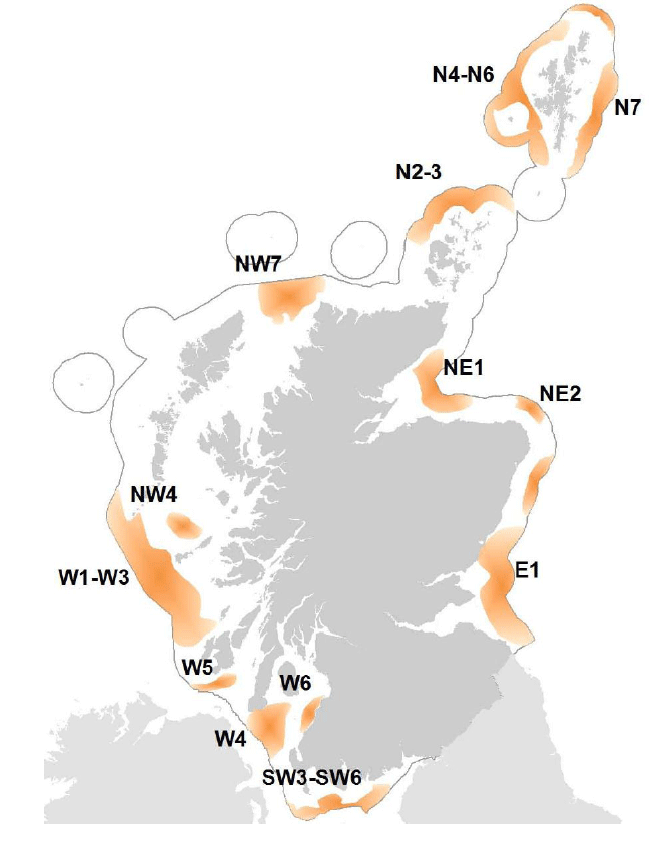
Table 1. Evolution of Draft Plan Options - Offshore Wind
| Document |
Blue Seas Green Energy |
Scoping Report for Offshore Wind Development |
Draft Sectoral Marine Plan for Offshore Wind Energy |
||
|---|---|---|---|---|---|
| Region |
Medium Term Area of Search |
Scoping Area of Search |
Location |
Draft Plan Option |
Location |
| EAST |
E1 |
E1 |
Firths of Forth and Tay |
- |
|
| NORTH EAST |
NE1 |
NE1 |
Inner Moray Firth |
- |
|
| NE2 |
NE2 |
South eastern part of the Moray Firth |
OWNE2 |
North coast of Aberdeenshire |
|
| NE3 |
NE3 |
East coast of Aberdeenshire |
OWNE1 |
East coast of Aberdeenshire |
|
| NORTH |
N1 |
N2-3 |
North of Orkney |
OWN1 |
North of Orkney |
| N4 |
N4-6 |
West of Shetland |
- |
||
| N5 |
- |
||||
| N6 |
- |
||||
| N7 |
N7 |
East of Shetland |
OWN2 |
South East of Shetland |
|
| N8 |
N8 |
North of Shetland |
- |
||
| NORTH WEST |
NW2 |
W7 |
South Minch |
- |
|
| NW4 |
|||||
| NW5 |
|||||
| NW6 |
|||||
| NW7 |
NW7 |
North Minch |
OWNW1 |
North Minch |
|
| NW8 |
|||||
| WEST |
W1 |
W1-3 |
Sea of the Hebrides |
OWW1 |
North West of Islay |
| OWW2 |
West of Tiree |
||||
| OWW3 |
West of Barra |
||||
| W2 |
W4 |
South of Kintyre |
- |
||
| W3 |
W5 |
South of Islay |
- |
||
| W4 |
W6 |
West of Ayrshire |
- |
||
| SOUTH WEST |
SW1 |
SW3-6 |
Solway Region |
OWSW1 |
Outer Solway Firth |
| SW3 |
OWSW2 |
Inner Solway Firth |
|||
| SW4 |
|||||
| SW5 |
|||||
| SW6 |
|||||
A.1.6 The Draft Plan Options represent development zones in which a proportion could ultimately be used for development. The Plan seeks to identify issues for consideration at project level zone planning and project licensing.
Fig 4 Offshore Wind Energy Draft Plan Options ( Current Stage)
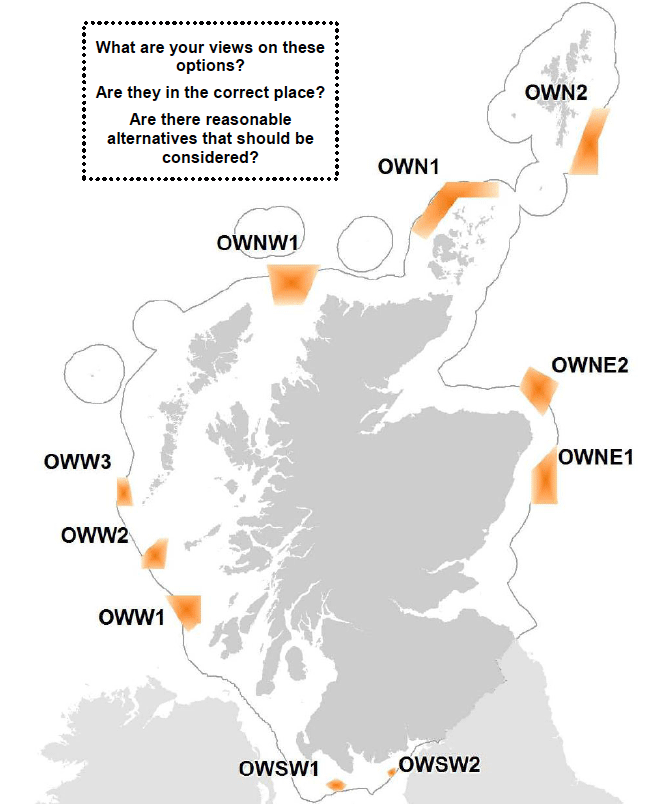
SEARCH NMPi - ' SMP - Wind (Offshore) Draft Plan options'
A.1.7 To support the development of deepwater technologies at the test and demonstration scale (under 100 MW), The Scottish Government will continue to develop and review Regional Locational Guidance as appropriate.
A.1.8 To support the development of deepwater technologies at a commercial scale, as part any future Plan Review process, consideration will be given, in the first instance, to the potential expansion of any adopted Plan Options identified within the current Sectoral Marine Planning process. In addition, consideration will be given to the identification of strategic development options (zones) further outside the Scottish Waters (12nm) limit. This flexible approach should help facilitate the potential for test and demonstration projects which may wish to expand to commercial scale (over 100 MW) in the longer term.
A.1.10 Any such expansion to the adoption Plan Options, or identification of new deep water commercial scale plan options, will be progressed in accordance with the requirements of the strategic assessments outlined in Sections 3.8.1- 8.
NATIONAL ISSUES
A.2.1 The draft Plan Options for Offshore Wind Energy have been subject to Strategic Environmental Assessment ( SEA), Habitats Regulations Appraisal ( HRA) and socio-economic assessment. The outcomes of these assessments have been brought together within the Sustainability Appraisal Report. The sections below contain the key issues arising at a national level from these assessments:
Sustainability Appraisal
Strategic Environmental Assessment
A.2.2 The SEA Environmental Report provides the detail on the identification and assessment of potential effects of the Draft Plan Options for offshore wind. The key results are summarised below:
- Potential effects on biodiversity as a result of collision with devices, particularly blades, barriers to movement of mobile species. Noise impacts on sensitive species from the construction of devices. The SEA considers potential effects on Seabirds, cetaceans, seals, elasmobranchs and fish species. Additionally there may be direct loss of seabed habitat from the installation of devices and effects associated with potential changes to patterns of tidal and sediment movement on marine habitats.
- Scope for impacts on water quality from contamination as a result of changes to turbidity and seabed disturbance in areas of existing contamination, or cross contamination of material used to fill gravity based devices. The significance of effects will depend on the proximity of devices to sensitive areas such as areas, such as those for fish spawning and feeding and shellfish growing waters.
- Positive effects for climate change mitigation through moving to decarbonisation of energy supply.
- Changes to turbidity, sediment disturbance, and loss of geology in placing devices may have secondary impacts on coastal processes. The significance of effects will depend on the proximity of devices to more sensitive coastlines such as those with geological SSSI and Geological Conservation Review sites ( GCRs).
- Potential direct effects on submerged archaeology during construction and in some cases potential for effects on the setting of features of the historic environment.
- Visual impacts on landscape and seascape character. Wind devices will result in change, however the magnitude of visual effects depends in general on visibility and positioning of devices in regards to onshore features. Visual effects for other sea users, such as recreation vessels, may increase if constructed in popular recreational locations. Effects from lighting at night time are possible although of greater significance for plan options in greater proximity to onshore and offshore receptors.
- In some locations new structures could increase collision risk for some vessels, including with each other as a result of narrowed channels of use due to potential exclusion zones. The likelihood of effects are considered to be of lower significance and able to be mitigated.
In all cases the SEA cannot provide precise certainty of effects as opportunities to mitigate and minimise effects are available as projects are planned, primarily through project design and location within Draft Plan Options. The significance of some of the potential effects can also only be established at the project design stage.
Draft Habitats Regulations Appraisal
A.2.3 The on-going HRA of the draft wind plan options continues to consider likely significant effects on the integrity of European designated sites. The HRA has confirmed the potential for the effects identified in the SEA. The HRA will focus on the following potential impact pathways:
- Direct and indirect physical damage to the habitats including consideration of the potential sensitivity of habitats (reefs, sub-tidal sandbanks, intertidal habitats including saltmarshes, and supralittoral habitats) during the construction, operation and decommissioning phase. Furthermore the potential for structures on the seabed to act as Fish Aggregating Device ( FAD) are considerations. The HRA will also include some consideration of physical damage from cabling on onshore habitats.
- Physical damage to species due to collision risk including Bottlenose dolphins and Harbour porpoise, Grey and Harbour seals, Atlantic salmon, Lamprey, Shad, seabirds and diving birds. The appraisal indicates further work at the project level will be required.
- Barrier effects during operation for species including Bottlenose dolphins, Harbour porpoise, Grey and Harbour seals, Atlantic salmon, Lamprey and Shad.
- Visual disturbance to surface feeding and diving birds.
- Noise and vibration effects during construction and decommissioning for species including Bottlenose dolphins, Harbour porpoise, Grey and Harbour seals, Atlantic salmon, Lamprey and Shad.
- EMF effects, although sensitivity is considered to be low, for Bottlenose dolphins, Harbour porpoise, Grey and Harbour seals, Atlantic salmon, Lamprey and Shad.
- Contamination resulting from elevated turbidity.
Socio-economic Assessment
A.2.4 Table 2 demonstrates the quantified economic impacts of draft plan options for offshore wind on other marine activities at a national level. The majority of impacts fall upon the shipping industry, particularly within the North East region. Other industries with significant costs include Carbon Capture and Storage and Commercial Fisheries.
Table 2: Present value ( PV) costs for Offshore Wind in at a national level, £m (costs discounted over assessment period, 2012 prices, values rounded to nearest £0.01m)
| Activity |
Description of Measurement |
Scenarios |
||
|---|---|---|---|---|
| Low |
Central |
High |
||
| Carbon Capture and Storage |
Additional costs of constructing cable crossings |
1.85 |
4.32 |
9.27 |
| Commercial Fisheries |
Value of potentially lost GVA (derived from landed values |
1.21 |
2.87 |
6.2 |
| Recreational boating |
Additional fuel costs |
0.05 |
0.72 |
0.91 |
| Shipping |
Additional fuel costs |
4.87 |
66.01 |
129.59 |
| Tourism |
Reduction in expenditure |
0 |
0.26 |
0.98 |
| Water sports - Sea Angling |
Reduction in expenditure |
0 |
0 |
0.47 |
| Total PV costs |
7.98 |
74.18 |
147.42 |
|
A.2.5 The remainder of the Plan contains a breakdown of the key issues in relation to the plan options within the following regions:
- North East
- North
- North West
- West
- South West
Table 3 Draft Plan Options for Offshore Wind Energy by Region
| OFFSHORE WIND ( OW) REGION |
DRAFT PLAN OPTIONS |
|---|---|
| NORTH EAST |
OWNE1 |
| OWNE2 |
|
| NORTH |
OWN1 |
| OWN2 |
|
| NORTH WEST |
OWNW1 |
| WEST |
OWW1 |
| OWW2 |
|
| OWW3 |
|
| SOUTH WEST |
OWSW1 |
| OWSW2 |
A.2.6 Illustrative maps within each Region contain the following developments where applicable:
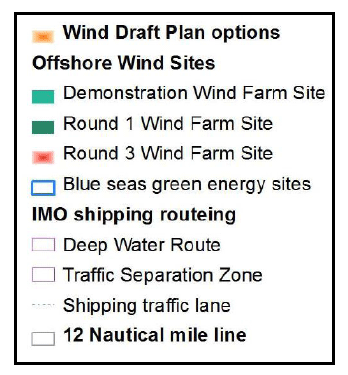
A.2.7 The key issues emerging from the Sustainability Appraisal listed in relation to each region. Further explanation is provided within the Sustainability Appraisal Report with a full breakdown of the issues contained within the respective socio-economic and environment assessments.
A.2.8 The consideration of cumulative and in-combination effects arising from existing, planned and potential future development options is considered within Section D.
A.3 NORTH EAST
A.3.1 The North East Region contains the following potential future options:
- OWNE1
- OWNE2
Fig.5 North East Region - Draft Plan Options
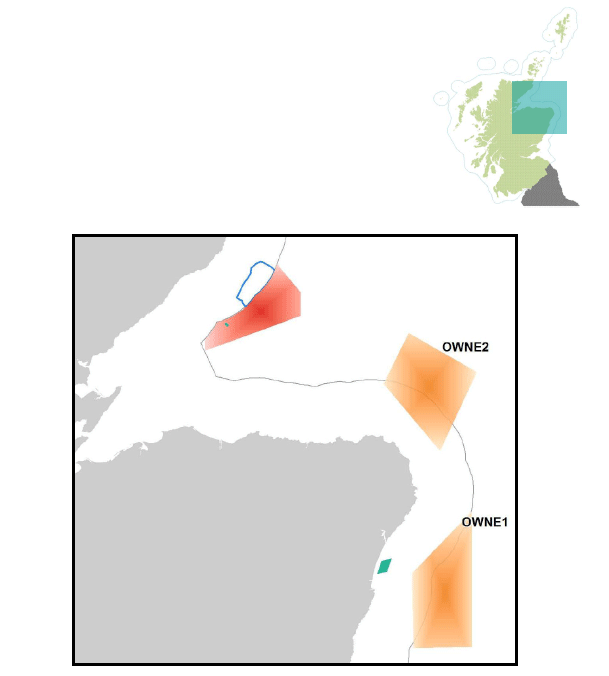
A.3.2 The Sustainability Appraisal indicates the following issues to be of particular significance in this region
- Carbon Capture & Storage
- Shipping and navigation
- Commercial Fisheries
- Biodiversity (Mobile Species and Designations)
- Aviation & Radar activities
- Defence activities
- Social impacts
- Seascape (cumulative effects)
- Cultural Heritage
A.4 NORTH
A.4.1 The North Region contains the following potential future options.
- OWN1
- OWN2
Fig.6 North Region - Draft Plan Options
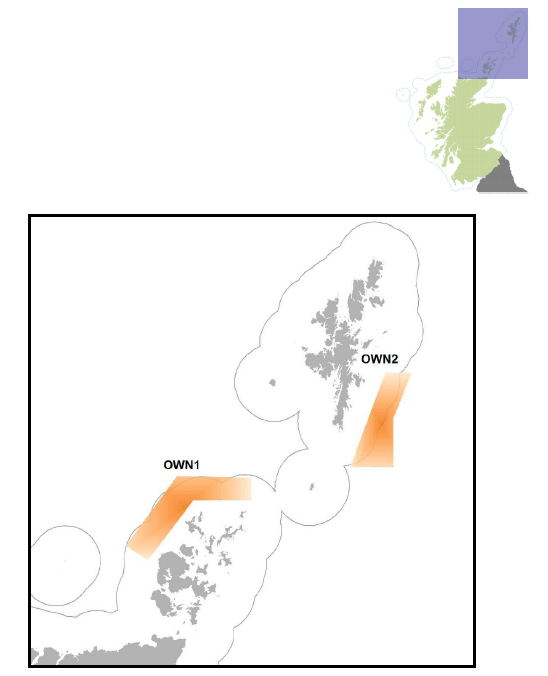
A.4.2 The Sustainability Appraisal indicates the following issues to be of particular significance in this region:
- Shipping and navigation
- Fishing
- Biodiversity
- Aviation and radar
- Defence activities
- Cultural Heritage
- Recreation
- Social impacts
- Community engagement
- Landscape and seascape (including designated areas)
- Seabed and coastal processes
A.5 NORTH WEST
A.5.1 The North West Region contains the following potential future option:
- OWNW1
Fig.7 North West Region - Draft Plan Options
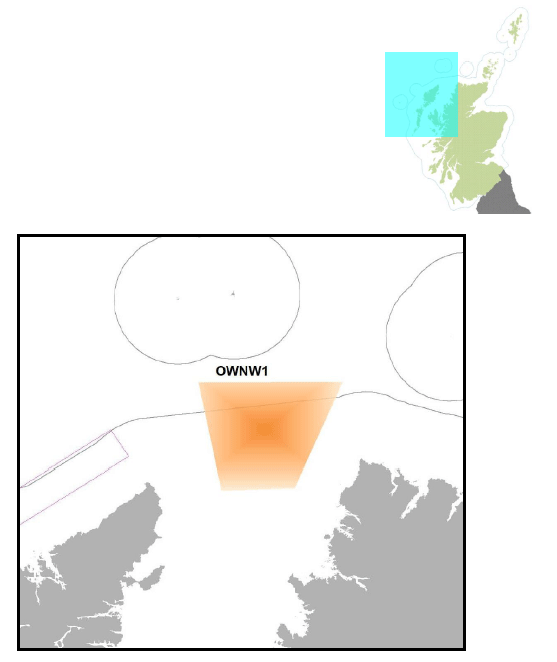
A.5.2 The Sustainability Appraisal indicates the following issues to be of particular significance in this region:
- Shipping and navigation
- Commercial Fisheries
- Biodiversity (mobile species and designations)
- Recreation
- Defence activities
- Community engagement
- Landscape and seascape (including designated areas)
A.6 WEST
A.6.1 The West Region contains the following potential future options:
- OWW1
- OWW2
- OWW3
Fig.8 West Region - Draft Plan Options and existing planned development
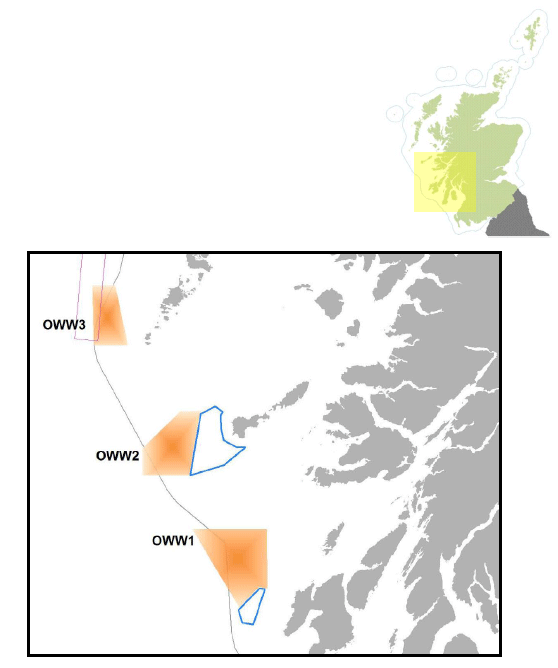
A.6.2 The Sustainability Appraisal indicates the following issues to be of particular significance in this region:
- Communities
- Shipping
- Commercial Fisheries
- Biodiversity
- Recreation
- Defence
- Seascapes and Landscapes
- Aviation
- Cultural Heritage
- Social impacts
- Seabed
A.7 SOUTH WEST
A.7.1 The South West Region contains the following potential future options:
- OWSW1
- OWSW2
Fig.9 South West Region - Draft Plan Options
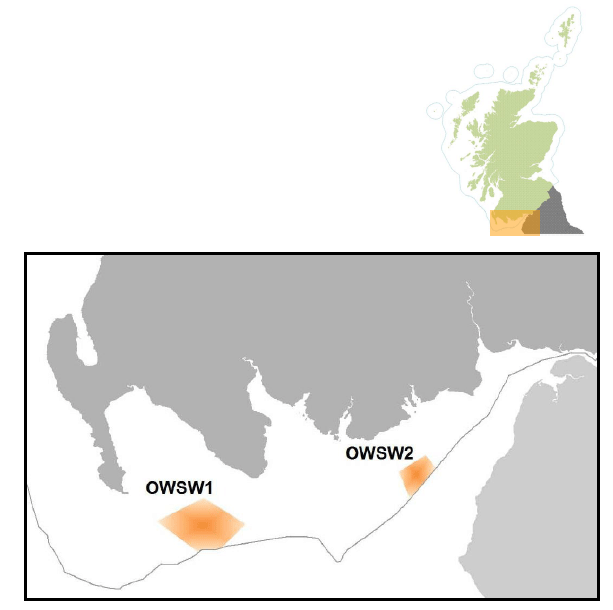
A.7.2 The Sustainability Appraisal indicates the following issues to be of particular significance in this region:
- Communities
- Shipping
- Biodiversity
- Recreation
- Cultural Heritage
- Landscape and seascape (including designated areas)
- Seabed and coastal processes
Contact
There is a problem
Thanks for your feedback